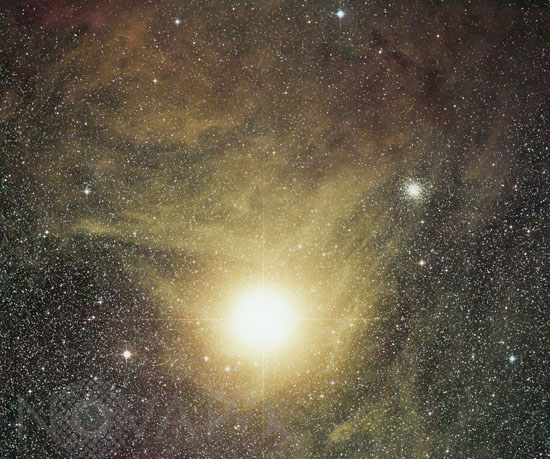Photo Agency - Astronomy - Space - Nature

The nebula around Antares
author: Anglo-Australian Observatory/David Malin Images/Novapix
reference: a-eto01-00001
Image Size 300 DPI: 49 * 40 cm
Antares is a giant among stars, and like giants in general, very rare. Antares has spent most of its short life as a highly luminous blue supergiant star, its mass obliging it to consume its vast store of nuclear fuel (hydrogen) very rapidly. This nuclear fusion process supplied the energy that prevented the star collapsing in on itself -- all stars support themselves against gravity in this way. Now, the supply of fuel in the core of the star is close to exhaustion and the star has undergone a major internal re-arrangement to cope with the changed circumstances, both cooling and swelling in the process. This star is big; the earth would be inside it if it were to replace the sun. At its cool, distended surface, tiny solid particles begin to appear, made of the heavier trace elements formed with in the star. They drift away, reflecting its light and making the yellowish nebula that seems to envelop the moribund star, soon to be a supernova.
Keywords for this photo:
AAO - ANTARES - ASTRONOMY - GLOBULAR CLUSTER - M STAR - NEBULA - NGC 6144 - POSTER - RED SUPERGIANT - SCORPIUS - SIDING SPRING - STAR - STAR CLUSTER - SUPERGIANT -
Contact : Stéphane Aubin +33-(0)9-51-26-53-76
© Novapix - All rights reserved


